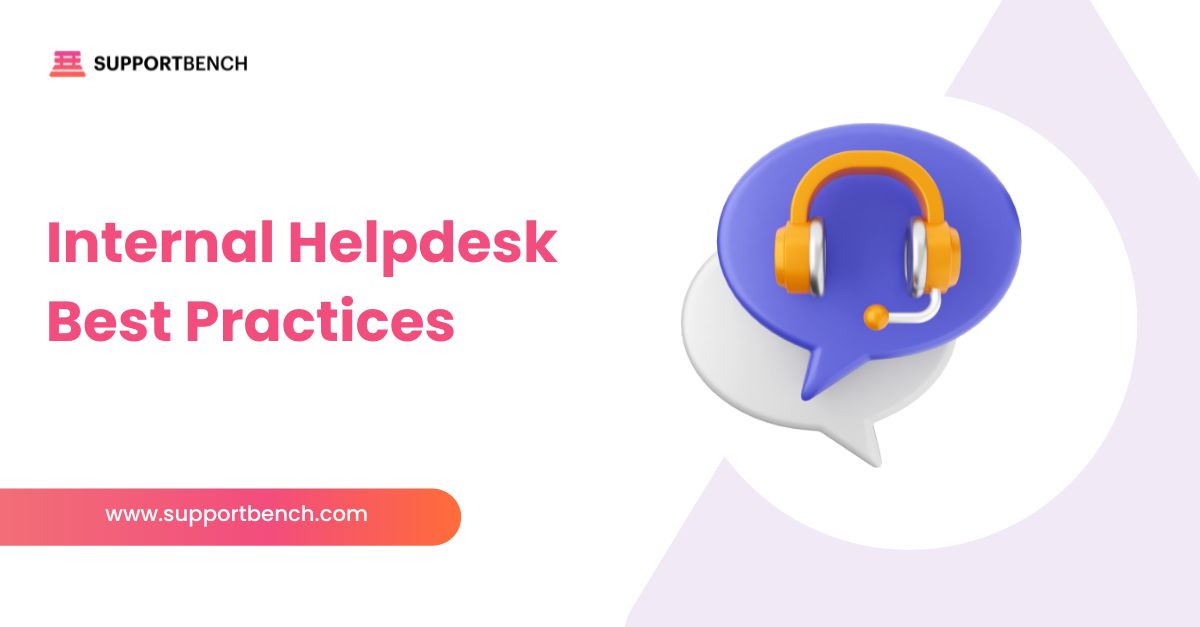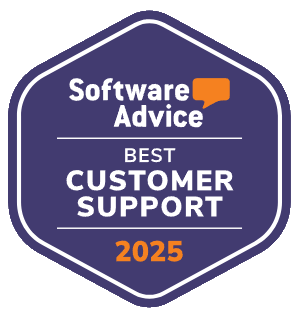As your business grows, customer support needs expand—and the helpdesk that worked well at a smaller scale may struggle under rising complexity. Choosing a solution that scales smoothly requires more than adding user seats.
You need features and architecture designed to handle increasing ticket volume, growing teams, and higher expectations. This article outlines the top features of a scalable helpdesk, supported by data and expert insight.
A modern AI-powered support system should adapt seamlessly, helping your team stay efficient and responsive as demands grow.
Here is the Quick Answer:
A scalable helpdesk handles growing ticket volumes and teams without slowing down. Key features include automation, omnichannel support, self-service, analytics, and strong SLA controls. Choose a solution with security, integrations, and flexible pricing to support your growth.
1. Solid Ticket Management
At the core of every helpdesk is its ticketing engine. A scalable solution offers advanced routing, flexible categorization, and customizable workflows to prevent bottlenecks as your support volume grows.

Automated Ticket Ingestion and Routing
Incoming messages from email, chat, social media, or phone convert automatically into tickets. Rules assign tickets by department, skill, or priority to reduce manual triage.
Custom Fields, Tags, and Status Tracking
Agents need to filter inquiries by region, product, priority, or SLA tier as ticket numbers increase.
Ticket Escalation and Merging
The system should detect duplicates and merge tickets automatically, with escalation workflows based on impact or customer segment to balance the queue.
✅ Strong ticket management ensures your team can handle growing complexity without losing efficiency or visibility.
2. Omnichannel Support
As your business grows, customers reach out through multiple channels: email, chat, phone, social media, and in-app messaging. A scalable helpdesk unifies these into a single, easy-to-use interface.
Unified Inbox
Agents see tickets from all channels in one place, with synced context—when a customer switches from email to chat, the history follows.
Support for Future Channels
Your helpdesk should easily integrate new channels like Slack, WhatsApp, or voice as your customer base expands.

3. Flexible Automation and Workflows
Manual tasks slow down support teams as volume grows. Scalable helpdesks offer powerful automation to handle routine work, letting agents focus on complex issues.
Automated Triage and Ticket Tagging
Set logic-based rules to prioritize incoming tickets and assign them to the right teams automatically.
Sequential Workflows
Automate processes like auto-closing stale tickets, sending follow-up messages, and escalating overdue issues to keep work moving smoothly.
AI-Enhanced Ticket Assistance
Many platforms include AI that suggests reply drafts, analyzes sentiment, or flags urgent issues, helping maintain consistency and quality.
4. Comprehensive Self-Service (Knowledge Base & Portal)
A scalable helpdesk reduces agent workload by empowering users to find answers on their own, anytime.
Internal Knowledge Base
Centralized documentation—including processes, troubleshooting guides, and templates—helps onboard new agents quickly and supports consistent resolutions.
Customer-Facing Self-Service Portal
FAQs and guides let users resolve common issues independently. AI-enhanced search further improves user experience by delivering relevant results faster.
Community Forums
Peer-to-peer support expands the knowledge base, addressing uncommon problems publicly and reducing ticket volume.

5. Reporting, Analytics, and Predictive Insights
As your team grows, raw data must translate into actionable understanding. A scalable helpdesk offers deep analytics and predictive tools to keep managers ahead.
Operational Dashboards
Monitor live ticket queues, agent workload, backlog, and SLA compliance in real time, enabling quick intervention.
Trend Dashboards
Track metrics like ticket volume by channel, common issues, and resolution times over months to spot systemic problems early.
Predictive Forecasting
Some helpdesks use AI to predict ticket volumes based on historical trends, helping with staffing and resource planning.
✅ Strong reporting tools turn data into clarity, empowering managers to improve performance continuously.
6. Service-Level Agreement (SLA) and Escalation Controls
As your business grows, customers will have varying service expectations. A scalable helpdesk must manage these differences effectively.
SLA templates and policies
Define response and resolution times based on ticket priority or customer agreements.
Automatic escalations
When tickets near SLA breach points, the system should trigger alerts and escalate issues to supervisors or specialists.
Escalation routing
Ensures tickets move swiftly to senior teams for faster, more effective resolution.
✅ Effective SLA and escalation management maintains service standards and customer trust.

7. Security, Compliance, and Data Governance
As your support software scales, protecting data and meeting regulations becomes critical.
User Authentication & Role-Based Permissions
Ensure least-privilege access for agents, admins, and partners. Features like single sign-on (SSO) and multi-factor authentication enhance security.
Data Encryption & Audit Trails
Enterprise-grade systems provide encryption, detailed access logs, and compliance with standards like GDPR, HIPAA, and SOC 2.
Region-Specific Hosting
Securely store customer and business data within required legal and geographic boundaries to meet regulatory demands.
8. Integrations with External Tools
Helpdesk systems rarely work in isolation. To scale effectively, they must connect seamlessly with other tools your business uses:
CRM and User Database Sync
Automatically surface customer history, purchase records, and billing info within tickets.
Team Collaboration Tools
Integrations with Slack, Microsoft Teams, or Jira allow agents to bring in specialists without leaving the helpdesk.
Asset Management and ITSM
For internal support, connect with configuration management databases, network inventories, and endpoint tools.
Automation Ecosystems
Use Zapier, webhooks, and APIs to extend workflows into billing, HR, and development operations.
9. Collaboration Tools
As support teams grow, effective teamwork becomes essential. Scalable helpdesks offer features that foster smooth collaboration:
Internal notes, tagging, and file sharing
Keep ticket information clear and shareable among agents.
Collision detection
Alerts agents when someone else is already working on the same ticket to prevent duplicate efforts.
Shared inboxes and dashboards
Organize tickets by type or team, enabling quick routing and reducing confusion.
✅ These tools minimize miscommunication and keep larger teams coordinated.
10. Scalability in Architecture and Pricing
Two critical factors to evaluate are system performance under heavy load and pricing transparency:
Performance
Ensure the solution can support thousands of agents and tickets simultaneously, backed by strong uptime SLAs.
Pricing Models
Look for flexible options like unlimited-agent plans or clear tiered pricing to avoid unexpected costs.
Deployment Options
Cloud-based solutions reduce IT overhead, while on-premise deployments may be necessary for compliance.
Reliability Features
Regular backups and high availability are essential to maintain continuous service.
11. Multi‑Department / Multi‑brand Support
As your organization grows, different teams and brands may require unique support workflows:
Multiple Queues
Allow teams like IT, HR, legal, and sales to work within the same system while following their own processes.
Brand-Specific Portals
Provide each group with customized customer-facing interfaces tailored to their brand identity.
Cross-Team Collaboration
Route tickets smoothly between departments when multiple inputs are needed.
✅ Effective multi-department support balances separation with clear oversight, ensuring seamless customer experiences.
12. API & Extensibility
An open API is vital for future-proofing your helpdesk. It enables:
Custom integrations
Connect to analytics tools, CRMs, or other business systems.
Automation
Use webhooks and scripting to trigger actions in external apps, like creating tickets in Jira.
Customization
Add custom pages, dashboards, or apps within your helpdesk interface.
✅ APIs and extensibility keep your support system flexible, adaptable, and aligned with evolving workflows.
Supportbench in Action: Real-World Scalability
Supportbench is trusted by over 9,000 businesses to handle millions of support interactions efficiently. Its scalable architecture and intelligent features help teams stay productive even as demands grow rapidly.
Key strengths include:
✔ Intelligent ticket management that adapts to rising volumes without bottlenecks
✔ Comprehensive SLA tracking that ensures service commitments are met consistently
✔ Live chat and AI-driven tools like Co-Pilot AI, providing quick knowledge access and boosting agent productivity
✔ Customizable portals and 360-degree customer views that support complex workflows across teams
These capabilities enable Supportbench customers to scale their support operations seamlessly, maintaining quality and responsiveness at every stage of growth.

6 Implementation Must-Dos for a Scalable Helpdesk Solution
Building a scalable helpdesk requires more than great software—it needs careful planning and execution. Here are six key steps to ensure success:
1. Define Your Scaling Goals
Clarify what growth looks like for your support team. Set targets for ticket volume, response times, and customer satisfaction to guide your efforts.
2. Map Workflows Early
Document your support processes and workflows to identify bottlenecks and areas for automation before scaling.
3. Prioritize Piloting
Test new features and configurations with a small group before rolling out broadly to catch issues early.
4. Train Teams Thoroughly
Ensure agents and managers understand new tools and processes. Continuous training helps maintain high performance during growth.
5. Monitor KPIs Continuously
Keep an eye on key metrics to detect issues quickly and adjust strategies proactively.
6. Plan Future Integrations
Anticipate new tools and channels your team may need, and ensure your helpdesk can connect with them smoothly.
Summary Table of Key Features
This table highlights the essential features across all critical helpdesk functionality areas for informed decision-making
Feature Group | Key Elements |
| Ticket Management | Automated Ticket Ingestion, Routing, Merging, Tagging |
| Omnichannel Support | Unified Inbox, Chat/Phone/Social Media Sync |
| Workflows & Automation | Escalation Workflows, Stale-Ticket Auto-Close, AI Assistance |
| Self-Service | Centralized Knowledge Base, Customer Portals, Community Forums |
| Reporting & Analytics | Real-Time Dashboards, Trend Analysis, Predictive Forecasting |
| SLA Management | SLA Templates, Priority Tiers, Breach Alerts, Auto-Escalations |
| Security & Compliance | Encryption, SSO, Multi-Factor Auth, Audit Logs, Regional Hosting |
| Integrations | CRM Sync, Collaboration Tools (Slack, MS Teams), ITSM Integrations, APIs |
| Collaboration Tools | Internal Notes, Tagging, File Sharing, Collision Detection, Shared Inboxes |
| Scalability & Pricing | Cloud/On-Prem Deployment, Flexible Pricing Models, Uptime SLAs, Redundancy |
| Multi‑Brand/Department Ops | Multiple Queues, Brand-Specific Portals, Cross-Team Ticket Routing |
| API & Extensibility | Open APIs, Custom Integrations, Webhooks, Scripting, Plugin Support |
Conclusion
A scalable helpdesk is the backbone of efficient customer support at every stage of growth. Essential features include solid ticket management, seamless omnichannel integration, and intelligent automation.
Comprehensive self-service, powerful analytics, SLA controls, robust security, and flexible integrations are also critical.
Focus on solutions that not only handle today’s volume but adapt as your team grows and customer expectations rise.
With careful planning, thorough testing, and a clear integration strategy, you can choose a helpdesk that supports growth and elevates customer experiences.















